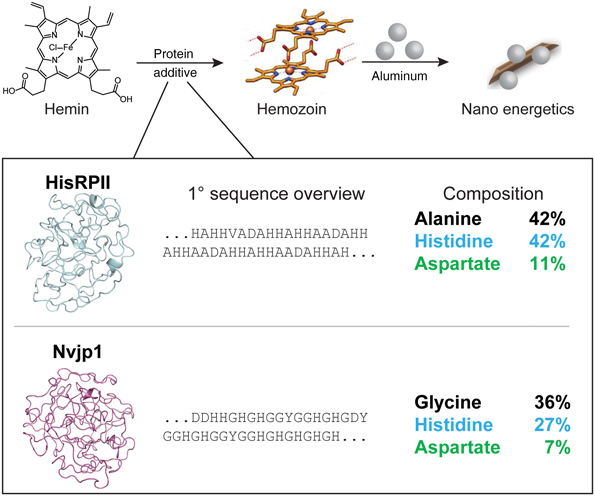Published online by Cambridge University Press: 24 April 2019

Here, we report that a marine sandworm Nereis virens jaw protein, Nvjp1, nucleates hemozoin with similar activity as the native parasite hemozoin protein, HisRPII. X-ray diffraction and scanning electron microscopy confirm the identity of the hemozoin produced from Nvjp1-containing reactions. Finally, we observed that nAl assembled with hemozoin from Nvjp1 reactions has a substantially higher energetic output when compared to analogous thermite from the synthetic standard or HisRPII-nucleated hemozoin. Our results demonstrate that a marine sandworm protein can nucleate malaria pigment and set the stage for engineering recombinant hemozoin production for nanoenergetic applications.